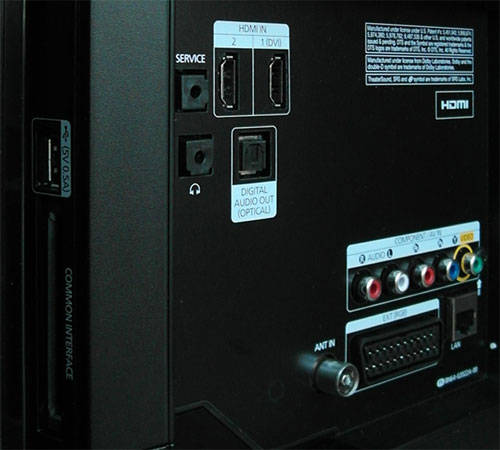If you've ever plugged a Raspberry Pi into a tv you've probably come across this issue - the displayed image either doesn't fill the screen or over-runs it.
The usual bit of googling reveals that all you have to do is tweak a couple of overscan settings and you are good to go. It sounds easy but three Raspberry Pis in and I've only just found the technique that lets me fix it before my patience runs out.
You've probably been persevering down this road quite a while now so I'll spare you the basics and I will skip to a trick that may save you all the hassle
Change to a different HDMI input on your TV
 Simple I know, but it actually works a treat, my classic but still great by today's standards Samsung UE32EH5000 has two HDMI port with one designated as DVI. My computer has always occupied this slot for no other reason that it uses ATi's special DVI to HDMI converter that magically passes through the sound as well and I've never had reason to change it - fit and forget.
Simple I know, but it actually works a treat, my classic but still great by today's standards Samsung UE32EH5000 has two HDMI port with one designated as DVI. My computer has always occupied this slot for no other reason that it uses ATi's special DVI to HDMI converter that magically passes through the sound as well and I've never had reason to change it - fit and forget.
It was only since I've been testing the dual HDMI capabilities of my graphics card that I've had reason to try the other port and in doing so I noticed that the connection through the non DVI designated connector actually overscanned. Hang on a minute, maybe not all HDMI ports are made the same.
On hooking my Raspberry Pi up into this socket everything ran swimmingly and and the edge of the screen lined up - magic.
Try my settings
If you don't have a fangled HDMI(DVI) port then you could have a crack at my settings. I actually came up with these before I knew about the trick above (but I am not bitter). In your terminal/SSH window type
sudo nano /boot/config.txt
then uncomment/add/change the below lines:
disable_overscan=1 overscan_left=39 overscan_right=39 overscan_top=25 overscan_bottom=23 framebuffer_width=1920 framebuffer_height=1080 hdmi_group=1 hdmi_mode=16
save the file with ctrl+o then exit with ctrl+x and reboot
sudo reboot now
to see if it has solved your woes. My settings above are actually a bit of an overkill and I'm sure I don't need all of them but I'm sticking with them at this moment because I done with fiddling with them for the moment.
How to tweak it yourself with this foolproof method
If my settings don't help you out here is my foolproof guide to getting it sorted. First up fire up PiXel of X with this command if you are not already in the desktop:
startx
![]() Next we are going you'll need a bit of underscan going on - can you see all of the screen in your TV/monitor - you can tell this by observing your cursor.Take a close look at the on screen pointer, but default it is white surrounded by a black border then another white outline of pixels. Move the pointer to the edges of your screen.
Next we are going you'll need a bit of underscan going on - can you see all of the screen in your TV/monitor - you can tell this by observing your cursor.Take a close look at the on screen pointer, but default it is white surrounded by a black border then another white outline of pixels. Move the pointer to the edges of your screen.
Left most and upper screen edges you should always be able to see the whole of pointer, to the left you should only see a vertical line of white pixels and on the lower edge you should only see a single dot of the tip.
If you can't see em go back to your config.txt and fiddle with the settings until you can (I'll skip this step as you've probably very up on how to get the wrong settings by now!).
Now all you have to do it reboot and re-tweak the settings until the edges of the pointer just creep off the screen and then bring them back one pixel.
I know it is tedious but it is the only reliable way I've found to resolve and your OCD will be put at ease.